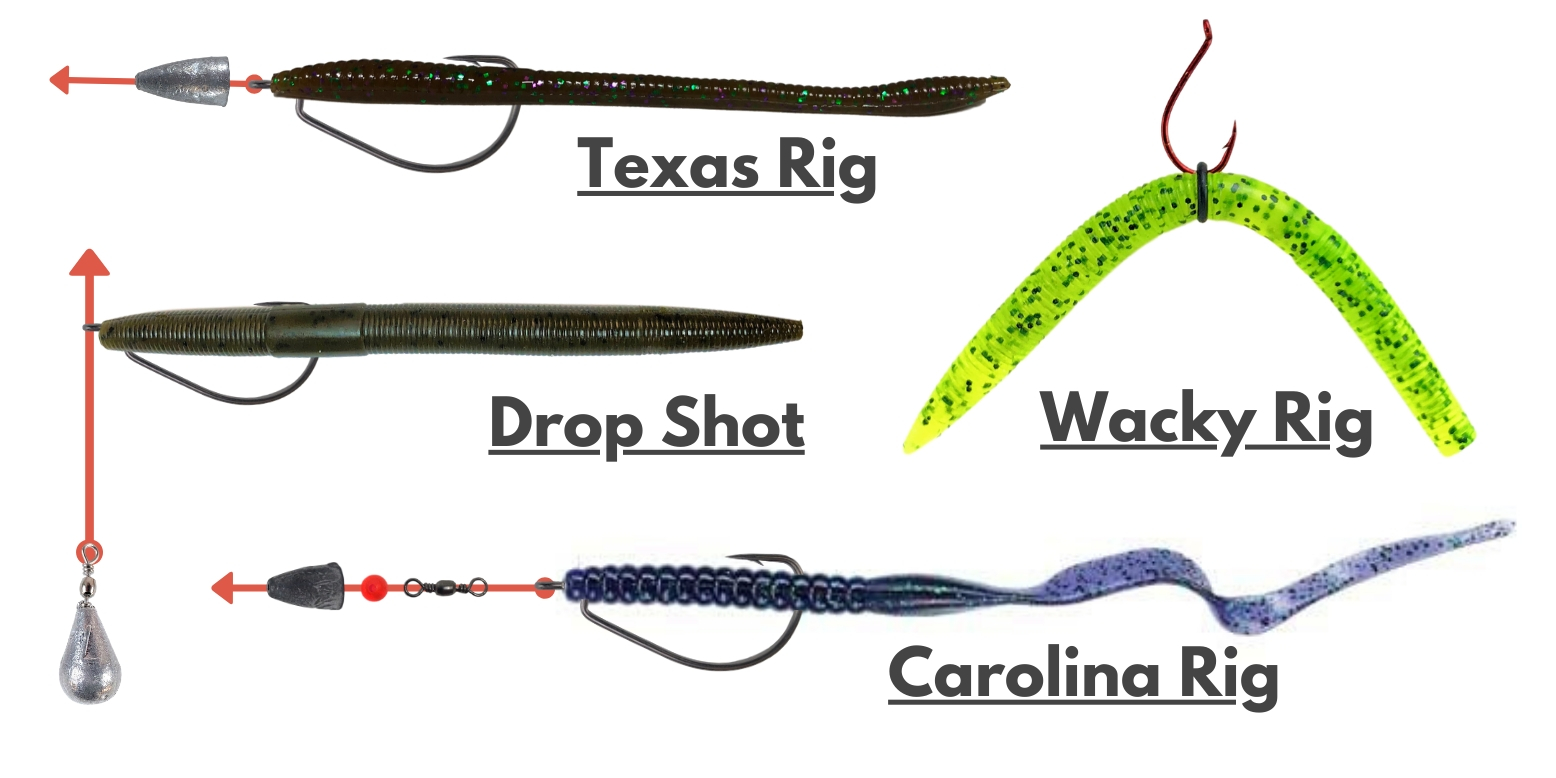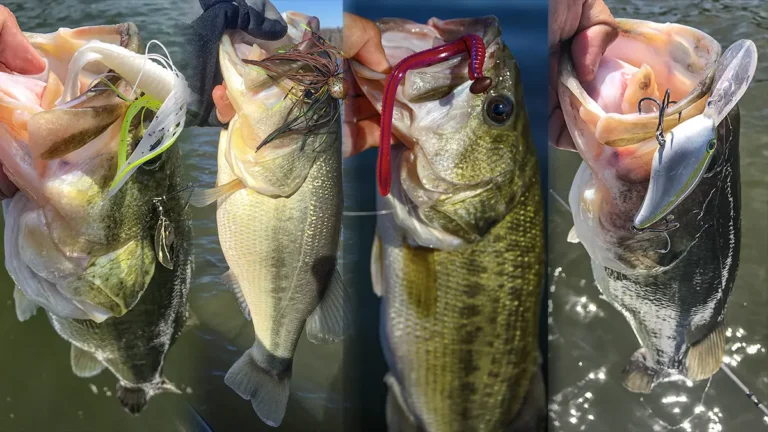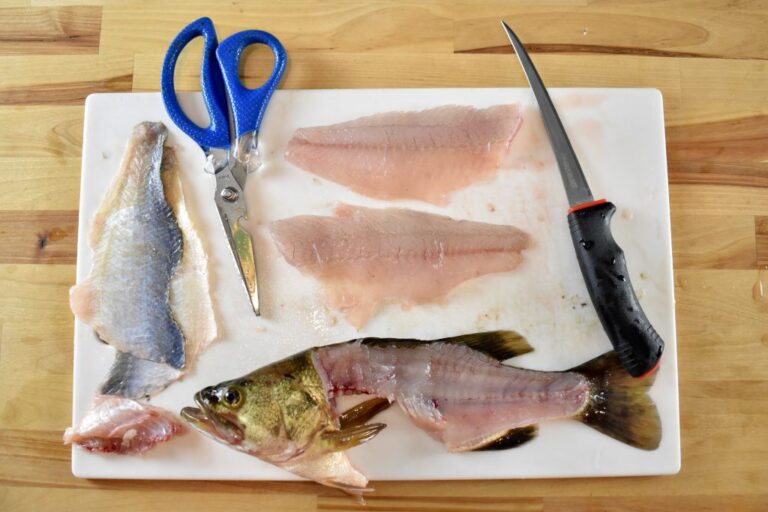How to Hook a Fake Worm for Bass

To hook a fake worm for bass fishing, thread the worm onto the hook to mimic natural movement. Ensure the worm is straight to prevent spinning, which can deter bass.
Mastering the art of artificial worm fishing is crucial for any bass angler, as it’s a proven method for attracting these cunning predators. Fake worms, when properly rigged, become irresistible lures that replicate the tempting squirm of live bait. Anglers around the world rely on various techniques to present these soft plastic baits effectively, ensuring successful catches.
Employing the correct hooking method—whether it’s Texas-rigging for weedless performance, wacky-rigging for a tantalizing fall, or Carolina-rigging for depth—is the linchpin for enticing bites and setting the hook firmly in a bass’s mouth. This guide focuses on setting up your artificial worm in a manner that maximizes your chances for a productive day on the water.
The Art Of Deception In Bass Fishing
Fake worms are popular for bass fishing. They trick smart bass by looking like real food. Bass eat worms because they are fast and easy meals. Anglers love fake worms because they’re great for catching big bass.
Fake worms come in many shapes and colors. This variety fools bass, making them think they’re real. Anglers can fish fake worms in many ways. They can move them fast or slow in the water.
Using fake worms is smart. It makes fishing fun and can give you more success. Bass are often clever, but a well-hooked fake worm can deceive even the wisest fish.
Fake Worms Versus Real Bait
Fake worms offer significant advantages over real bait in terms of durability. Unlike real worms, which can degrade quickly on a hook, fake worms maintain their integrity for longer periods, allowing anglers to spend more time fishing and less on bait replacement.
Ease of use is another area where fake worms shine. They are easy to hook and remain secured, even after repeated casts. This ease saves time and increases the chances of a successful catch.
Analyzing the effectiveness of fake worms in different water conditions shows they perform consistently. Their vibrant colors and scent attractants work well in both clear and murky waters. Real bait may lose effectiveness, especially in conditions that are less than ideal for its preservation.
Selecting The Perfect Imitation Worm
Choosing the right imitation worm for bass can make all the difference. Focus on both size and color to match natural prey. Smaller worms work better in clear water or when baitfish are present. In murky waters, bass rely more on their sense of sight, so vibrant colors are key.
The worm’s material and texture are crucial too. Soft plastics that mimic the squishy feel of real worms will be more convincing. Look for worms with realistic textures and ridges as these subtle details can fool even the wariest bass. Always touch and feel the bait before buying to ensure it feels lifelike.

Credit: fishnatics.com
Setup Secrets For Successful Hooking
Securing a fake worm on a hook ensures bass fishing success. Various hooks serve distinct purposes. A round bend hook is ideal for worm presentation, allowing the worm to move naturally. The wide gap hook, on the other hand, fits larger worms and provides a good hook set. Using the right knot is crucial for performance.
Mastering the Palomar knot and Improved Clinch knot is essential. These knots offer strong connections and minimal slippage. They allow the worm to swim with ease, tempting bass to strike. Always check knots for weakness before casting.
Mastering The Hooking Technique
Mastering the hooking technique requires patience and practice. Use the proper threading way to ensure a more effective lure. First, pierce the worm’s head with the hook point. Gently thread the fake worm onto the hook, pushing it upwards along the shank. Continue until you reach the eye of the hook, leaving the point exposed.
For variable situations, adjust the hook placement. Shallow waters call for a weedless setup. Here, tuck the hook point just under the bait’s surface to avoid snagging. Deeper waters allow for a more exposed hook point, which aids in better hookset chances. Always test your rig to ensure natural movement.

Credit: www.wikihow.com
Advanced Tips And Tricks
Experience shows that modifying your worm can significantly increase your chances of catching bass. A popular method is to cut slits in your fake worm to create more movement. Another technique is to pinch off a piece of the tail to alter its swimming action. Anglers often use a lighter to melt certain parts, enhancing the worm’s flexibility.
Knowing bass movement in different seasons is crucial for success. During spring, bass often swim near the surface; thus, lighter worms work best. Summertime calls for deeper fishing techniques, and worms with extra tail action can entice bass from their hideouts. Come fall, choose worms that can be worked slowly and deliberately, as bass become more lethargic. Winter fishing requires patience and very subtle movements, as bass are often in a state of reduced activity.

Credit: www.wired2fish.com
Frequently Asked Questions On How To Hook A Fake Worm For Bass
What Is The Best Hook For Fake Worms?
The best hook for fake worms is a 2/0 to 4/0 offset shank, wide-gap worm hook. This size and style ensure optimal presentation and secure hooksets.
Are Fake Worms Good For Bass?
Yes, fake worms, known as plastic or rubber worms, are highly effective for catching bass due to their lifelike movement and versatility in various fishing conditions.
How Do You Put Fake Bait On A Hook?
Start by threading the fake bait onto the hook’s point. Push it up towards the hook eye, covering the shank. Ensure the bait sits firmly to mimic live prey. For added allure, adjust its position so it moves naturally in water.
How Do You Hook Up A Trick Worm?
To hook up a trick worm, thread it onto the hook to conceal the hook point, and ensure natural movement. Opt for a Texas or Carolina rig for effective results. Keep the worm straight to avoid spinning and discourage fish from biting.
Conclusion
Mastering the art of hooking a fake worm is crucial for any bass fishing enthusiast. A well-hooked imitation can be the difference between a good day and a great day on the water. Remember, practice leads to perfection. So rig that lure with confidence, cast it out, and wait for the satisfying tug of a bass on the line.
Catching that trophy fish is now within your reach!



